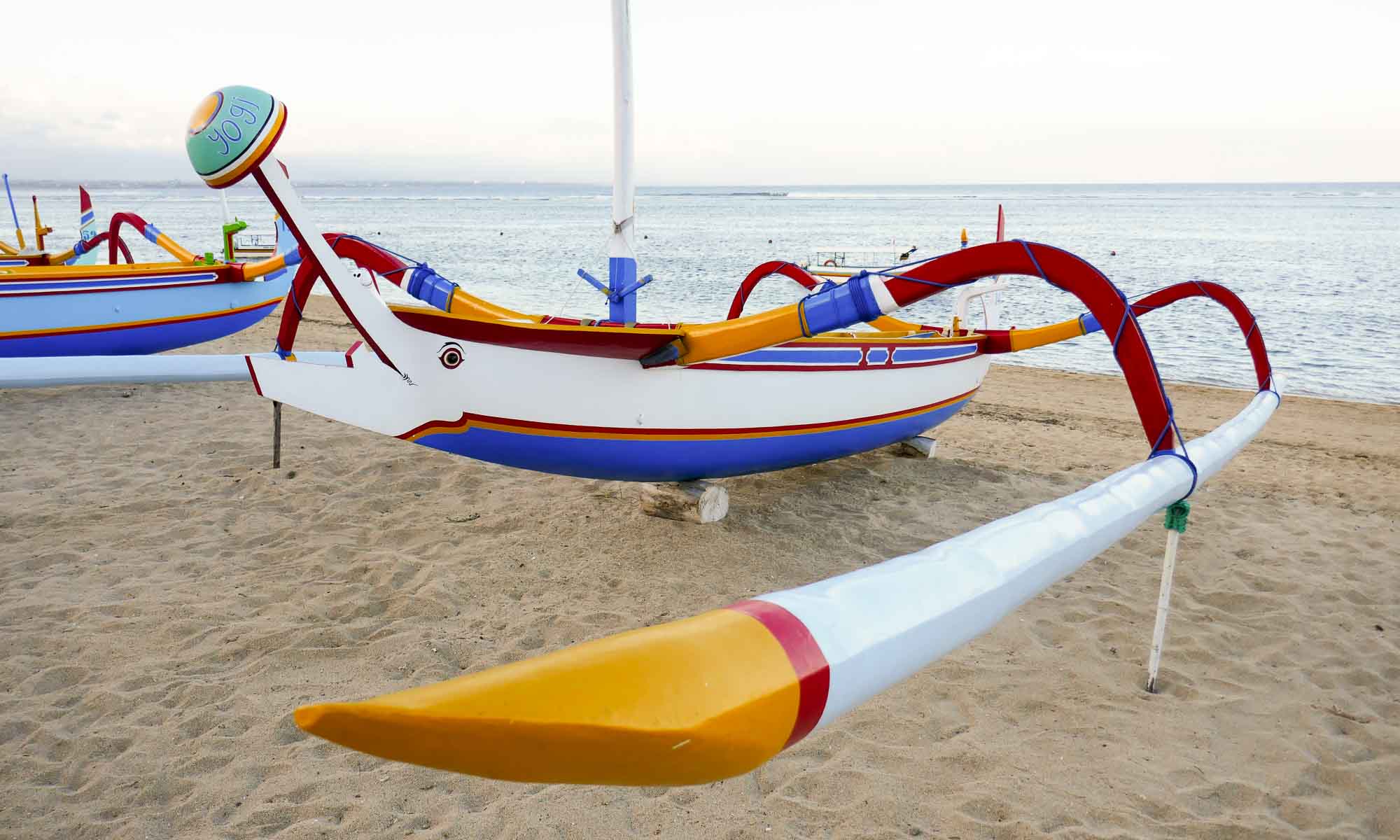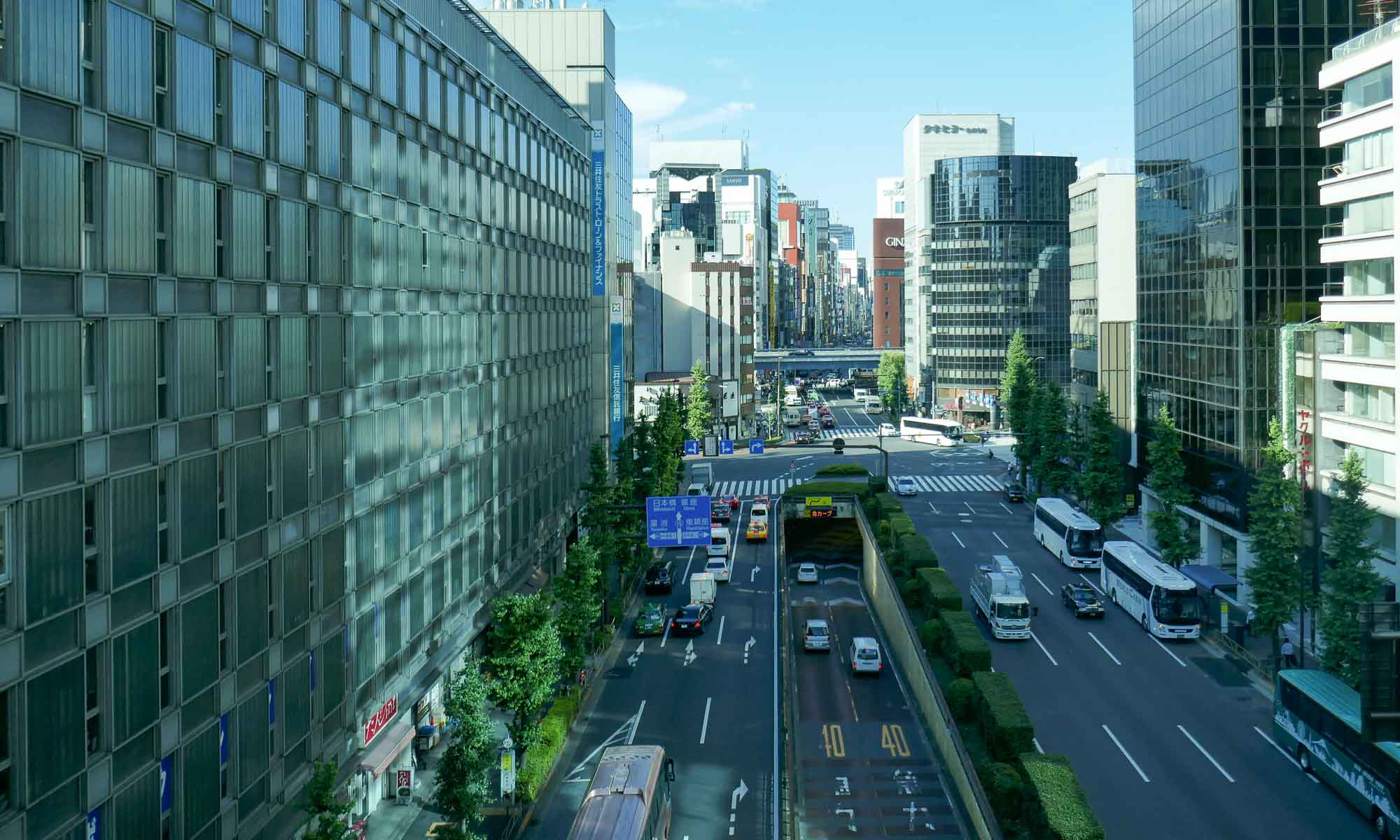Most people that refer to Penang are referring to the island of Penang, while actually the state of Penang consists of two parts: the portion on the mainland of Malaysia, Seberang Perai, of which the largest city is Butterworth, and the island of Penang, where Georgetown is the capital city.
Georgetown is the second largest city in Malaysia and was established in 1786 by a captain of the British East India Company. It became a British colony in 1867 though during World War II for a time it was occupied by the Japanese. As part of the Federation of Malaya, it gained independence from the British in 1957.
In 2008, Georgetown was given the status of a UNESCO World Heritage site, recognized for its unique cultural and architectural townscape. Walking through the old town you can clearly see that the buildings are a hodgepodge of various cultures and religions.
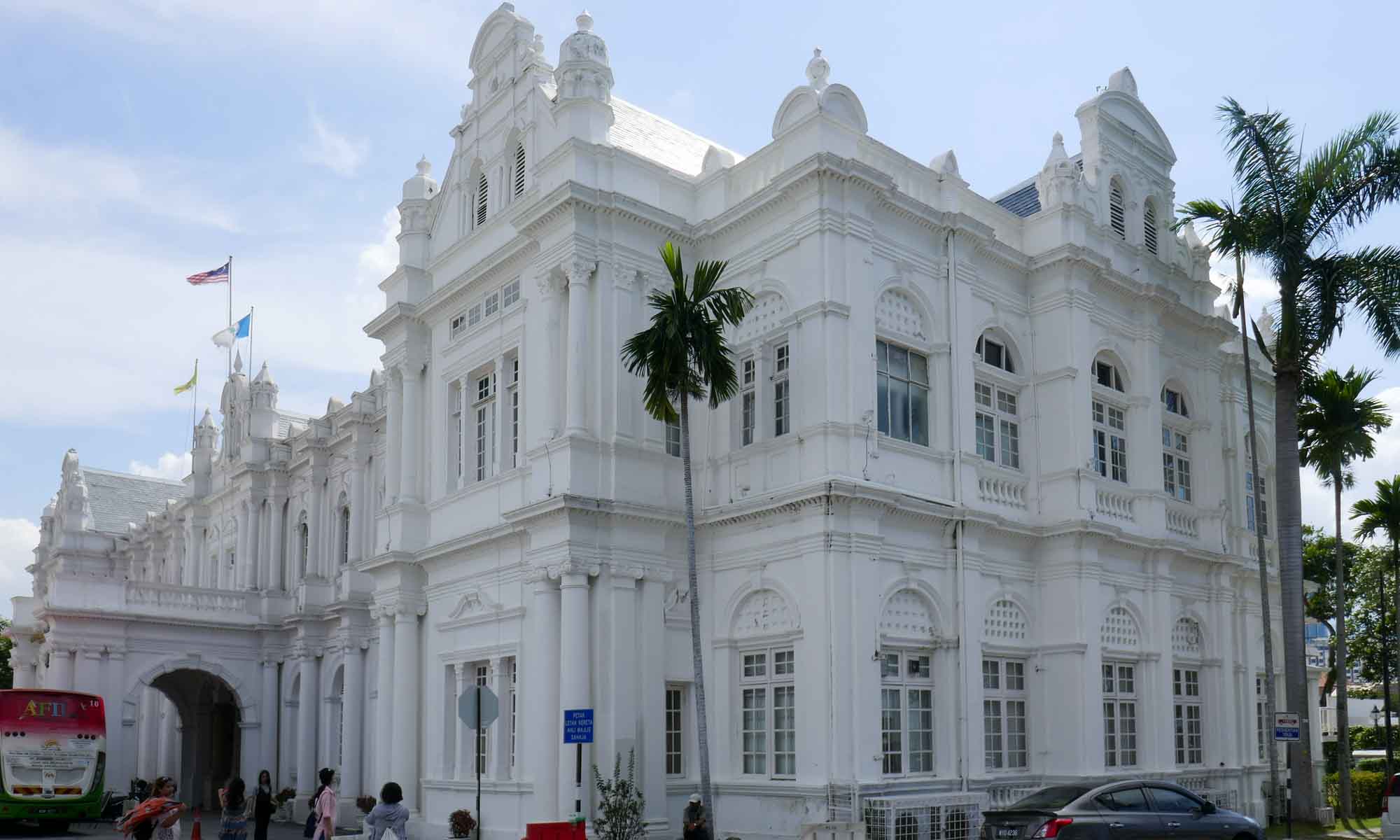
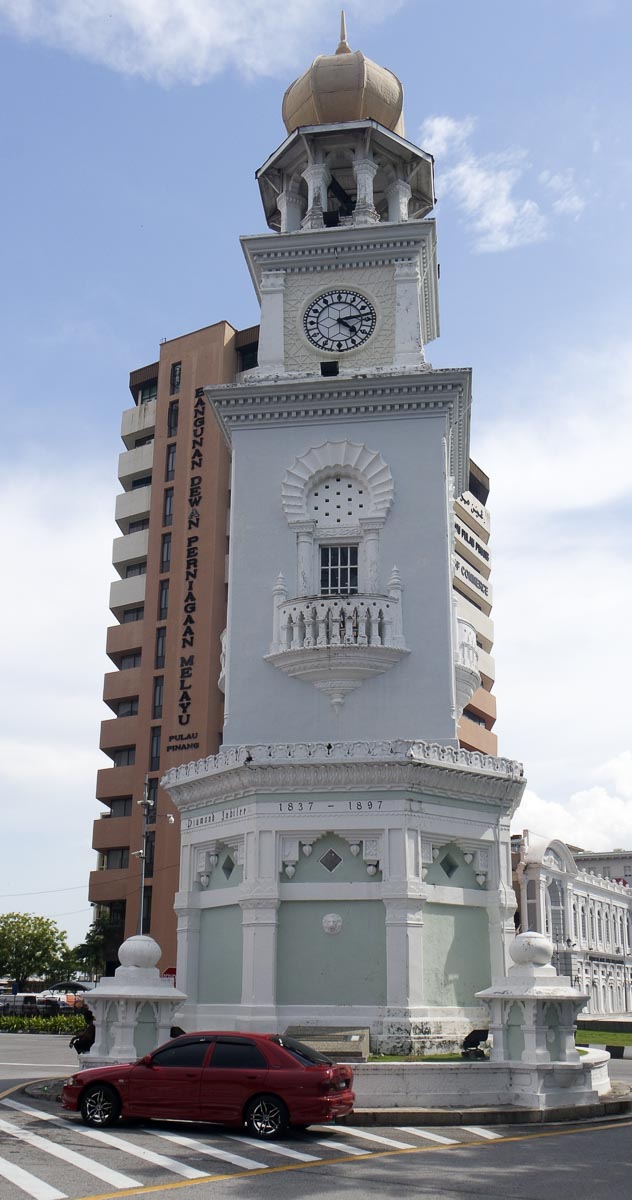
Today, Penang is known as the Silicon Valley of the East given the presence of several engineering, electronics, and IT related companies, which have been attracted to the Free-Trade-Zone status of Bayan Lapas, in the south of the island
Highlights of Georgetown
We had a total of 4 nights in Georgetown and wanted to ensure that we took some time to recharge after almost a month of travelling, as well as see a few highlights. Thus more time was spent just walking around the streets of Georgetown, shopping or just enjoying all the complimentary benefits of our hotel.
Penang Street Art
In 2012, as part of the Mirrors Georgetown project, the Penang Island Municipal Council commissioned Ernest Zacharevic to bring new life to old run down Chinese-style buildings in the old town. The project was successful and spurred life into some local artists, who have also added some murals. as well as drawn hordes of tourists. The murals which are now a tourist attraction include the use of various 3D materials, and are best seen on foot. Unfortunately, the murals are not well maintained, and while searching for one of the murals in the Chew Jetty area, we were informed that one of the murals had actually been painted over and even noted that the Grandma and Grandson mural had been half-covered by an advertisement.
Note: Most hotels provide maps with the locations for the various murals or an iPhone App can be downloaded.
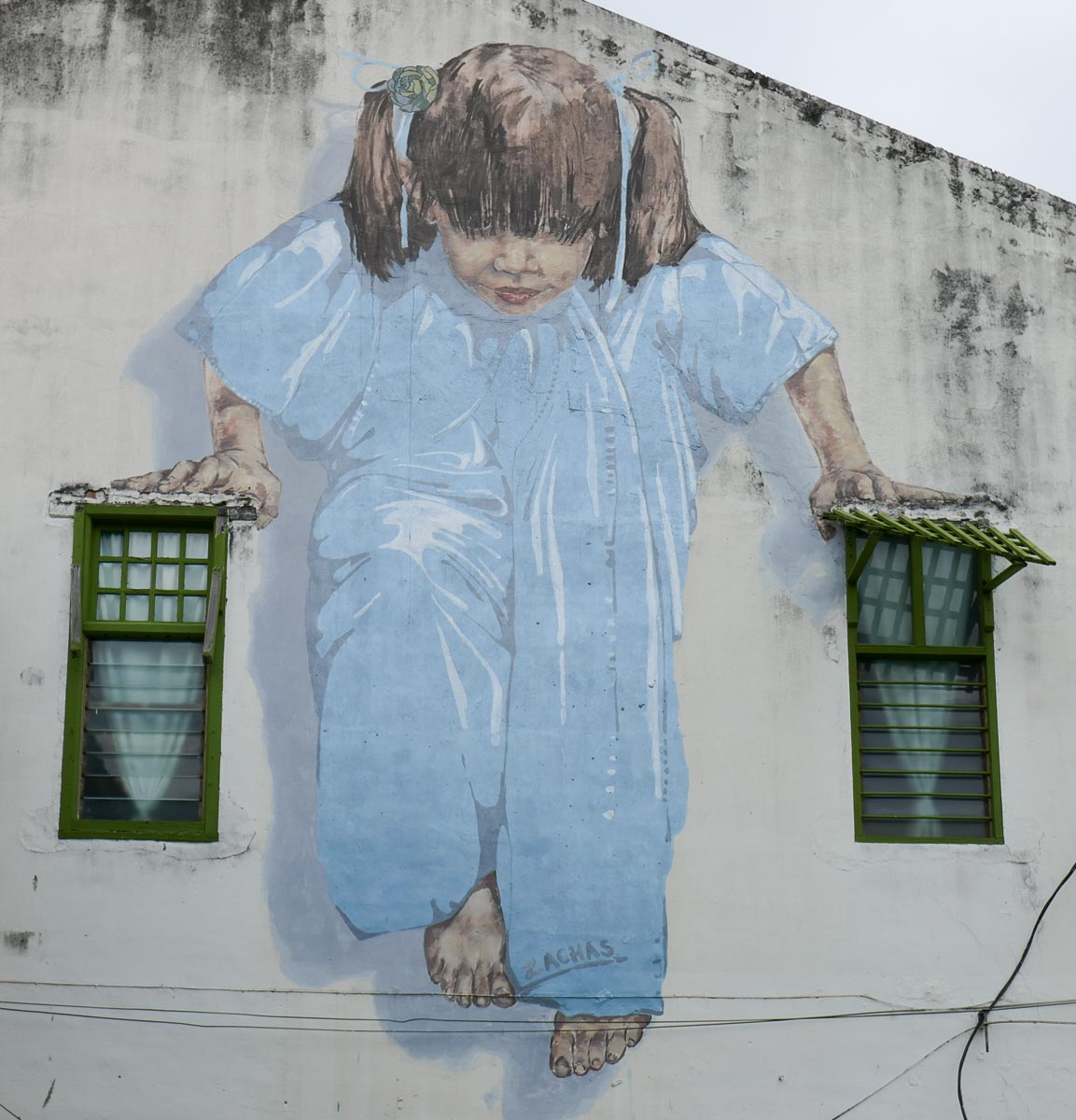
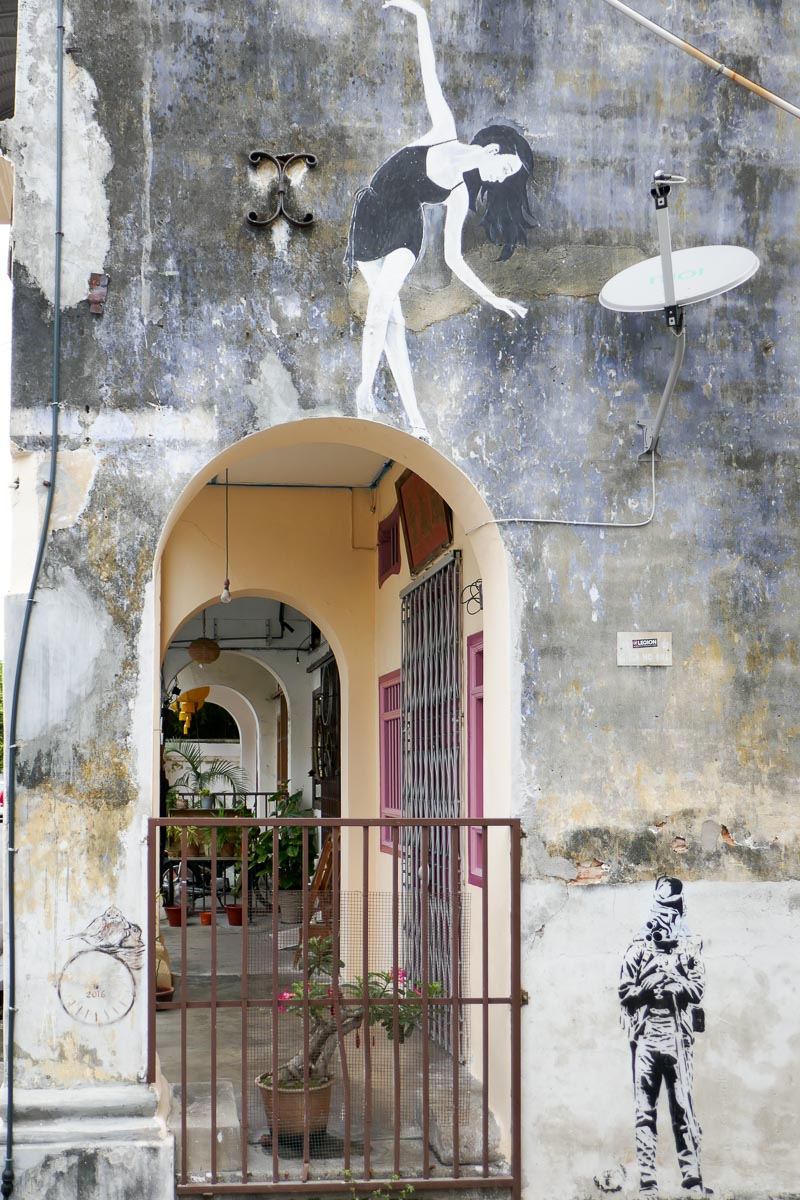
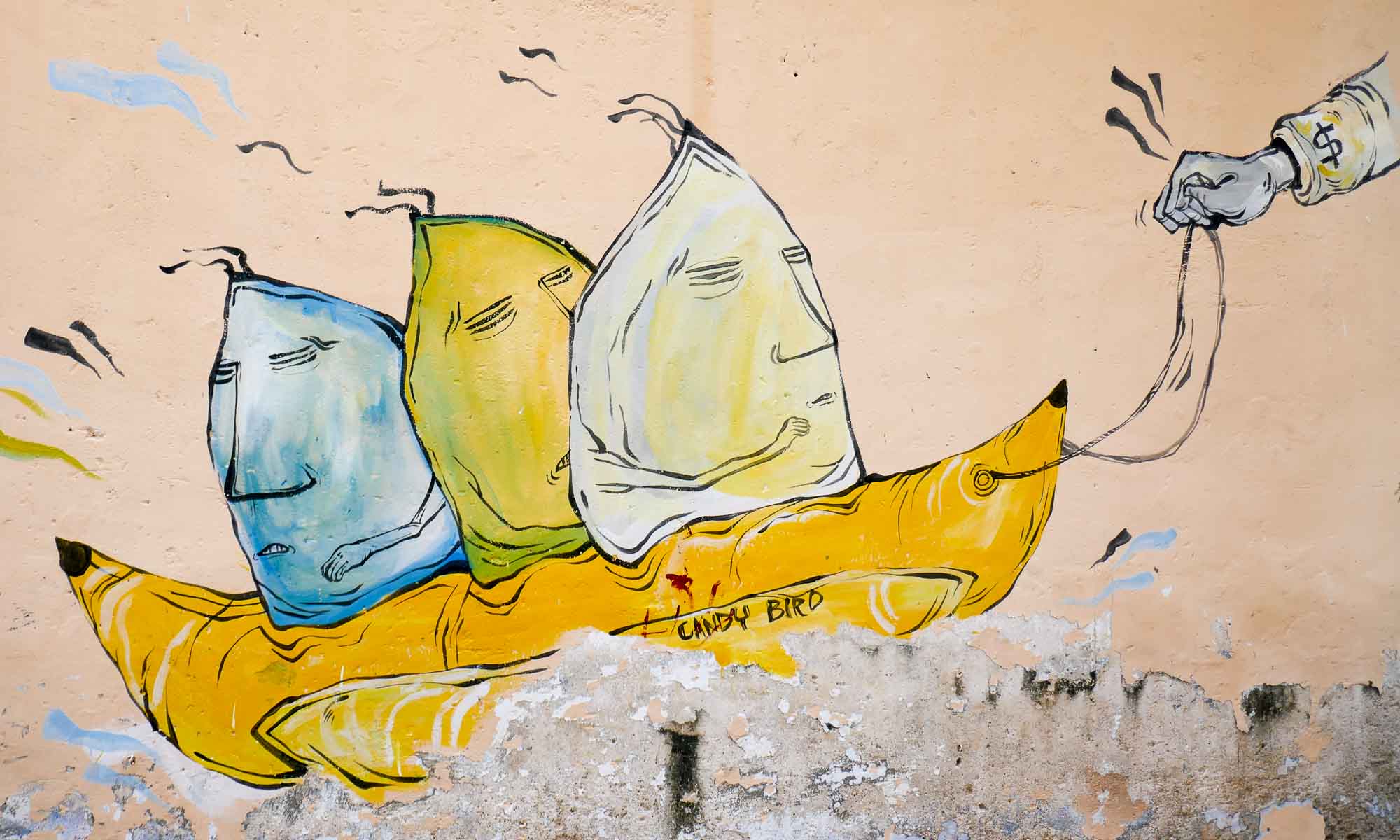


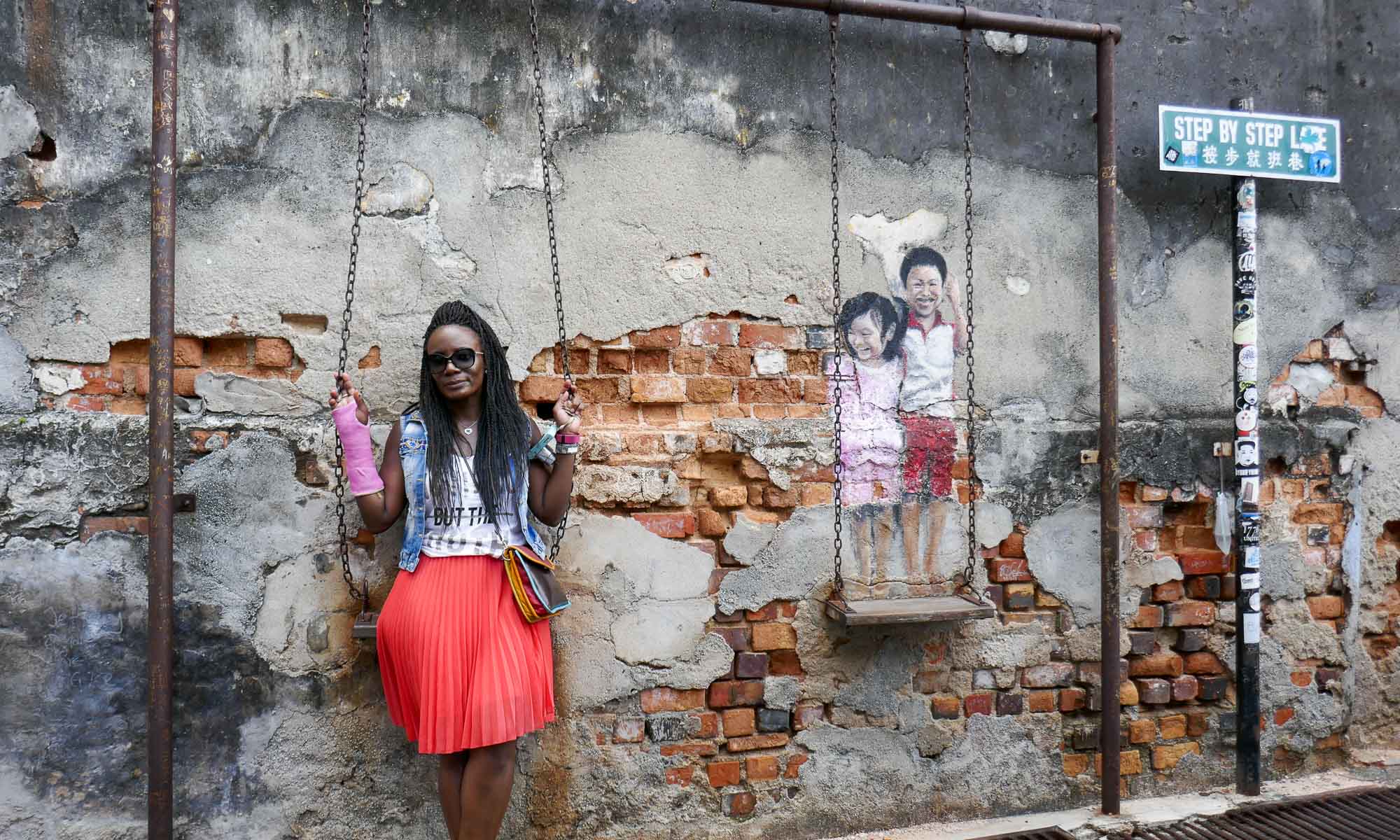
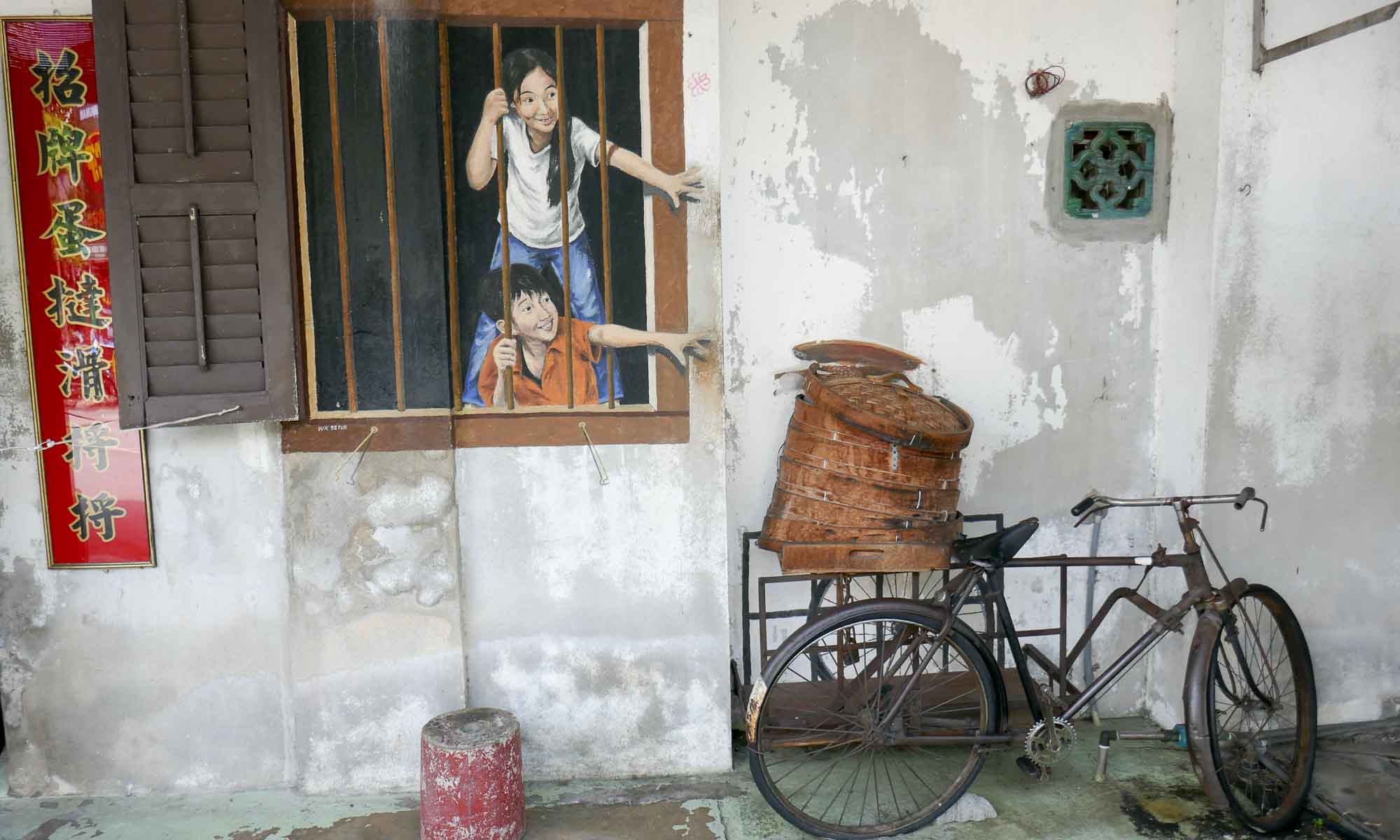
Clan Jetties
These are thought to be one of the last historical places of old Chinese settlements on the islands and are located on the waterfront just across from Pengkalan Weld. The jetties are home to various Chinese clans with each jetty named after a different clan (Lim, Chew, Tan, Yeoh, Lee, Kway, etc). We visited Chew Jetty (the most tourist friendly one), one of the oldest, which is thought to have the most houses on stilts. Walking to the very end of the long walkway we passed several shops and houses and were awarded with picture perfect views of the waterfront.
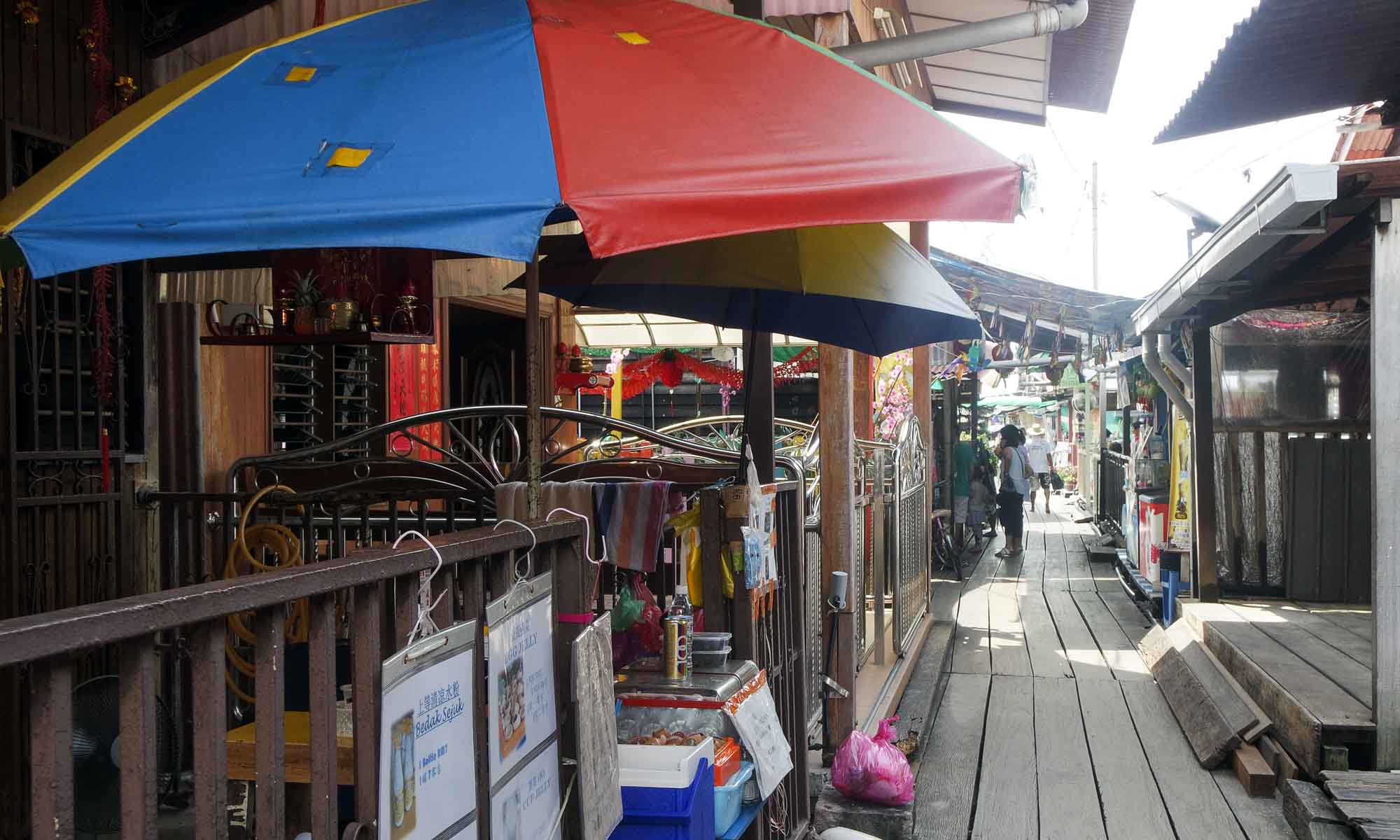
Getting to the Chew Jetty
The entrance to the Chew Jetty is beside the temple on Pengkalan Weld, close to the Penang ferry terminal.
Penang Hill (Pulau Pinang)
To get great views of the island we headed to Penang Hill, which is located 6 km from the city centre of Georgetown. During the British colonial period, it was used as a retreat and is the oldest British hill station in SE Asia. The peak of the hill, at 833m above sea level can be reached via a funicular train service. There are two prices for tickets, local and foreign; and two types of tickets, normal and fast lane (which by-passes the queue and has priority for boarding). We opted for the fast lane ticket at RM 60.
Once at the top, there is a viewing deck with panoramic views of Penang. The viewing deck is well designed such that each person is able to enjoy the view unobstructed. In addition, there are a number of museums, restaurants, a food centre, mosque and a temple. After enjoying the great views, and grabbing a bite to eat, we decided to make our way down to the street, at which point we encountered quite a long queue for the funicular. Fortunately with our fast lane ticket we were able to walk straight to the front of the queue, and even enjoy a lounge while waiting for the funicular to arrive.
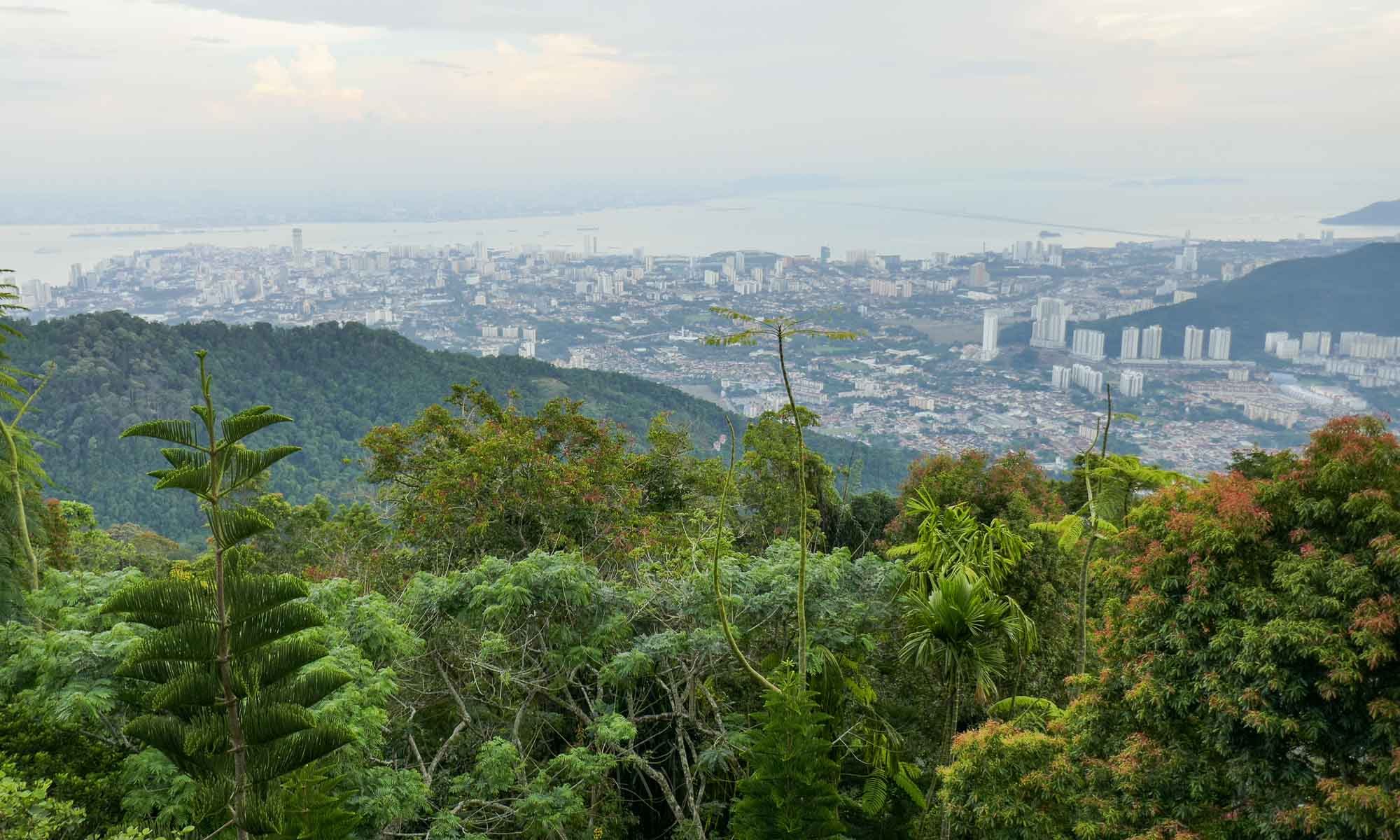
Getting to Penang Hill
We took bus 204 from the bus station below the KOMTAR shopping mall and it dropped us right next to the cable car station. The ride is about 30 minutes and costs RM2. On the way back it is important to note that there is no regular schedule and the bus does not return to the KOMTAR bus station, but passes close enough to it.
Batu Ferringhi
Prior to arriving in Georgetown, we had heard that we should make our way to the beaches and night market at Batu Ferringhi. It is located in the northern coast of Penang Island and is said to be the prime beach destination for locals and tourists. While the journey there, via bus 101, was quite enjoyable as we passed more modern and upscale neighbourhoods, showing a different side of Georgetown, the beaches at Batu Ferringhi are definitely not on our top 10 list!
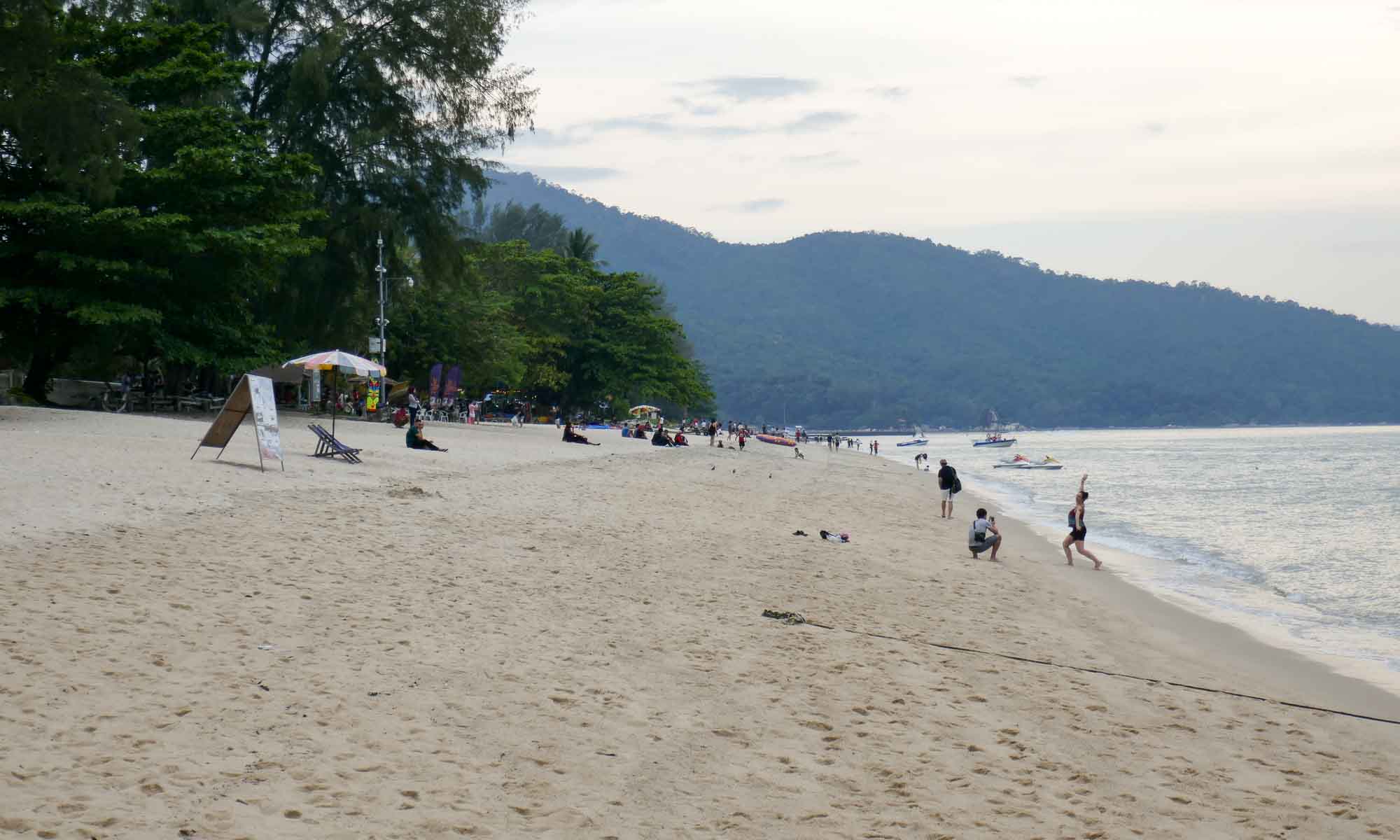
Sleeping in Georgetown
After much research we ended up staying at Le Dream Boutique Hotel, a new hotel located in the old town. From the first step into the hotel we were well received by the staff, and quickly learned of all the perks offered by the hotel. These included daily high-tea, happy hour and ice-cream sessions. The room though on the small size, was artfully decorated, and though we had a couple of minor issues these were all immediately addressed by the staff. This is definitely one hotel we left wishing we could stay longer, and hope to someday return to.
The hotel was located less than 10 minutes walk from three malls: KOMTAR, Prangin and 1st Avenue, and we spent a couple of afternoon’s avoiding the rain in one of them.
Dining in Georgetown
Penang is known for its cusine and this was something we were looking forward to. There are several hawker centres and after some research we ended up at Red Garden Food Paradise. Food can be ordered at any kiosk and is then brought to your table. Payment is at the end of the meal. To order drinks, various people walk around and take your order. Besides having food for everyones taste, they offer live musical entertainment which is much appreciated by the average tourist customer. All and all it was a good meal and experience.
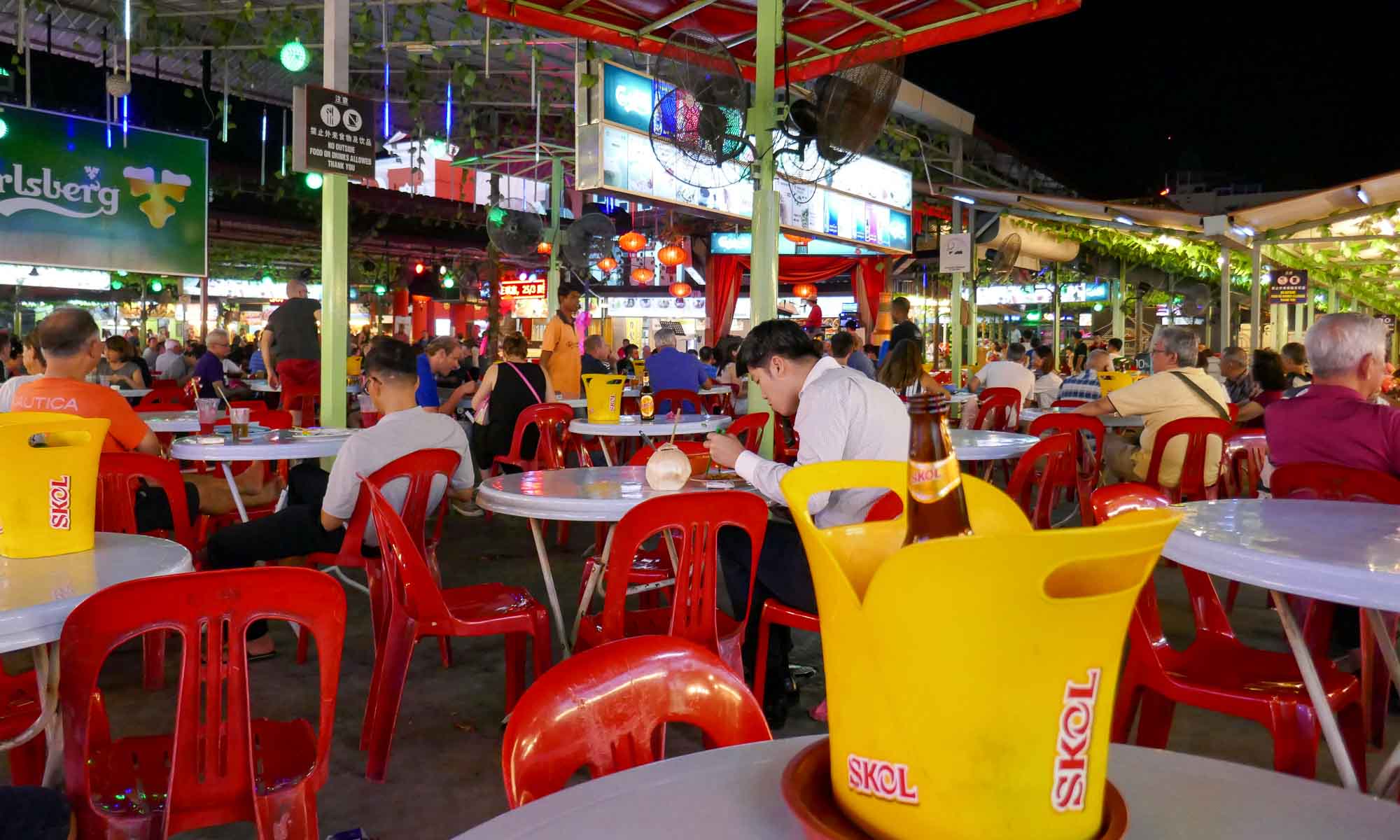
Another evening we passed Hong Kee Wan Thun Mee a noodle place at 37 Lebuh Campbell that was filled with locals. Though the inside of the restaurant appeared slightly chaotic we decided to check it out. We discovered that they are known for making their own noodles and
and we didn’t regret, though this is not a place to enjoy the ambiance…. just enjoy the food and the price and continue what you were doing. It is called and can be found at

Getting to the island of Penang
The train from Ipoh arrived in Butterworth after about a 2 hour journey, after which we walked to the port (Sultan Abdul Halim Ferry Terminal) to catch the ferry over to Penang Island. The first ferry leaves at 5:20am, and continues through the day at a 30 minute interval. The walk to the port includes going up a flight of stairs and subsequently walking uphill for about 100m. This is the cheapest way to get to the island, at RM 1.20. Coins are required to go through the turnstiles but there is a little office where you can obtain exact change. The ferry ride is pretty comfortable and lasts 15 minutes. Cars are allowed on the ferry and you will notice a number of them keep their engines on to enjoy their air conditioners. At Georgetown the ferry arrives at Raja Tun Uda Ferry Terminal which is not far from most hotels and tourist sites.
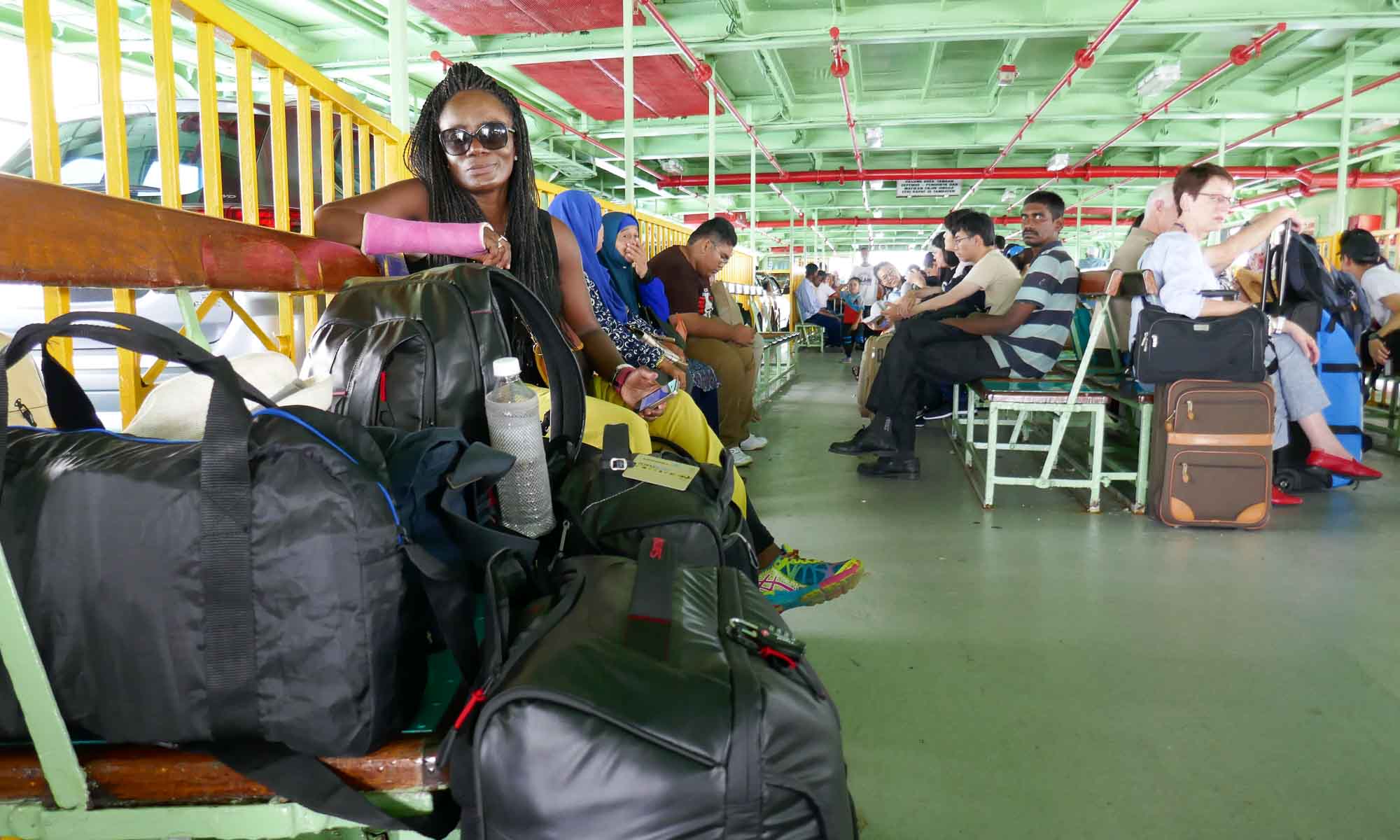
Initially we had wanted to take a taxi to the island, but after being quoted a price of $20 we quickly made our way to the port. The journey goes via the Penang Bridge which connects the mainland to the island and is the second-longest bridge in Malaysia.
Getting around Georgetown
Ever since arriving in Singapore, we had heard so much of GRAB, Asia’s answer to UBER. We started to use GRAB more in Georgetown, particularly since we realized not only where they cheaper, but once we had reserved the car online, there was no need to discuss the drop-off point. Obviously, similar to UBER, GRAB has not been well received in some places, and as such the drivers do all they can not to enrage the taxi drivers.
In addition to GRAB, we used local buses to get around though if staying purely in the old town, walking enabled us to gain a better appreciation for the city.
Additional tidbits
Laundry: Being on the road for several weeks, with a finite number of clothes one of the places we see out in every location is a self-service laundromat. In Georgetown we found 123 Laundry which was close to our hotel (see 123laundry.com.my). Exact change is required, and can be obtained a few shops further, with staff who also provide any assistance needed. Detergent is included, and clothes were washed and dried in an hour, not bad!

